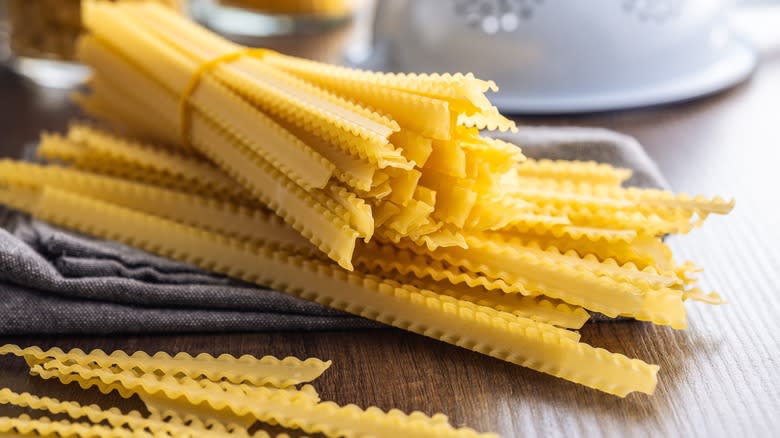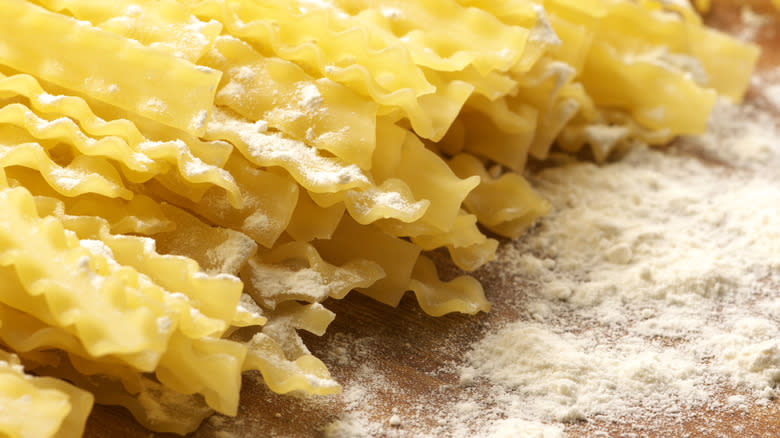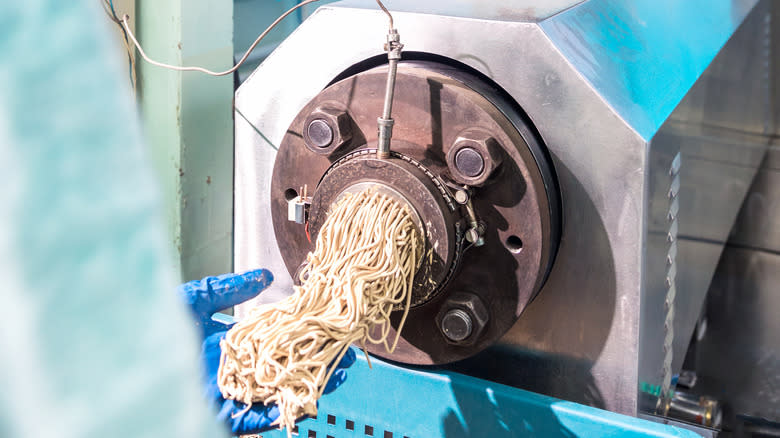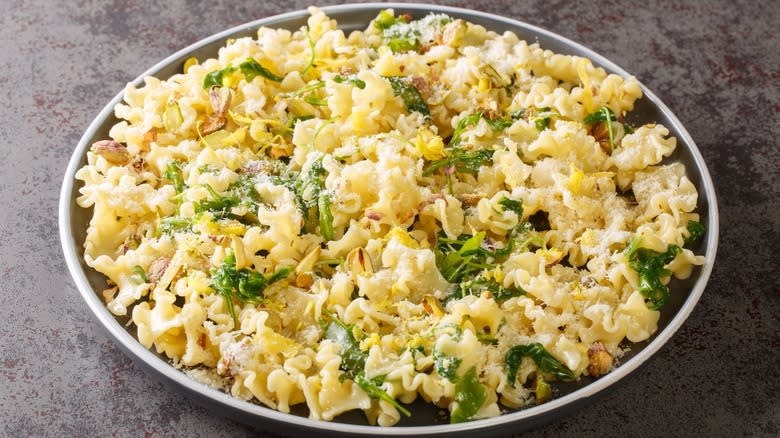What Makes Manfredi Lunghi Pasta Unique?

There is an abundance of pasta types, with seemingly every shape, texture, and size possessing its own name. While browsing the grocery store shelf, selecting between all the varieties can feel overwhelming. However, with a bit of background knowledge, there are still new gems to discover -- and the payoff's worthwhile.
So, for a lesser-known noodle, look out for Manfredi Lunghi. The rigid, ribboned pasta is something special. Springy and long, it's an excellent vehicle for sauce; its porous texture absorbs each drop. Plus, it's completely vegan, too, comprised of only water, flour, olive oil, and salt. Paired with a simple tomato sauce, or some cheese, it can make a delectable meal with only a handful of ingredients. Few pasta varieties will meld better with a ricotta sauce.
Consumed in Southern Italy for centuries, its ribboned shape is interlinked with festivities. And its multiple names all allude to royalty. Let's dive into the background of this esteemed noodle type.
Read more: 44 Types Of Pasta And When You Should Be Using Them
History Of Manfredi Lunghi

This uniquely frizzled pasta shape hails from Southern Italy and is especially popular in the Campania region. A mainstay of festivals and celebrations, it's commonly enjoyed on Sundays, as well as during Carnival. Known by several names, Manfredi is its oldest title -- an ode to a Sicilian king who enjoyed the food all the way back in the 13th century.
The pasta is also frequently called mafaldine or simply mafalda. Such a name emerged at the onset of the 20th century when pasta-makers altered its moniker to celebrate the birth of Italian princess Mafalda of Savoy. Throughout her childhood, the princess frequently wore festive frills, which mimicked the pasta's shape. As a result, the newly given name strengthened in affiliation.
In 1925, Mafalda married Prince Philip, Landgrave of Hesse. Although the German monarch maintained a positive relationship with Hitler at the onset of WW2, his bearing shifted toward the conflict conclusion. As a result, the princess was arrested and taken to an internment camp, where she died of bomb-related injuries in 1944. The pasta continues to hold her name in remembrance.
How Is Manfredi Lunghi Made?

Like other pasta, Manfredi Lunghi only incorporates a few ingredients, but each one is of very high quality. This variety doesn't use eggs, instead only incorporating semolina flour, salt, water, and some olive oil. The process is the same as other eggless pasta types. The ingredients are combined in precise proportions, rested, and then rolled out.
The extrusion process is what lends this pasta its unique quality. It's typically processed through a bronze-die cast. These machines, which can be over a century old, impart a texture and form irreplicable through any other method. The pasta has a coarser feel, with microscopic troughs that absorb a larger abundance of sauce. Furthermore, the noodle's extra grooved shape is especially pronounced, a characteristic that can't be replicated with other equipment. Such characteristics are fine-tuned through a generational manufacturing process -- and the result is wondrous. Let's dive into how this distinct pasta is prepared.
Pasta Dishes Utilizing Manfredi Lunghi

Manfredi Lunghi can be used in place of other long kinds of pasta like fettuccine or spaghetti. This variety works especially well with sauce-forward versions since the particles will adhere to the noodles. Such a quality is highlighted by the most classic Neopolitan preparation of pasta; with ricotta sauce.
The dish, simply known as Manfredi con la ricotta, builds upon a simple onion and tomato sauce. The pasta is mixed into the sugo-like mixture alongside parmesan cheese and plenty of ricotta. A sprinkling of basil adds a dash of bright color, plus salt and pepper are the predominant seasonings. Such a combination showcases the best of the noodles, with a creamy texture supplemented by a springy bite.
Manfredi Lunghi also meshes beautifully with mushrooms. Alongside aromatics like garlic and onion, simply utilizing the pasta water will tie the dish together. So don't feel intimidated by substituting Manredi Lunghi into a broader range of applications. With a delightful texture and taste, the noodles are a malleable centerpiece.
Read the original article on Tasting Table.

